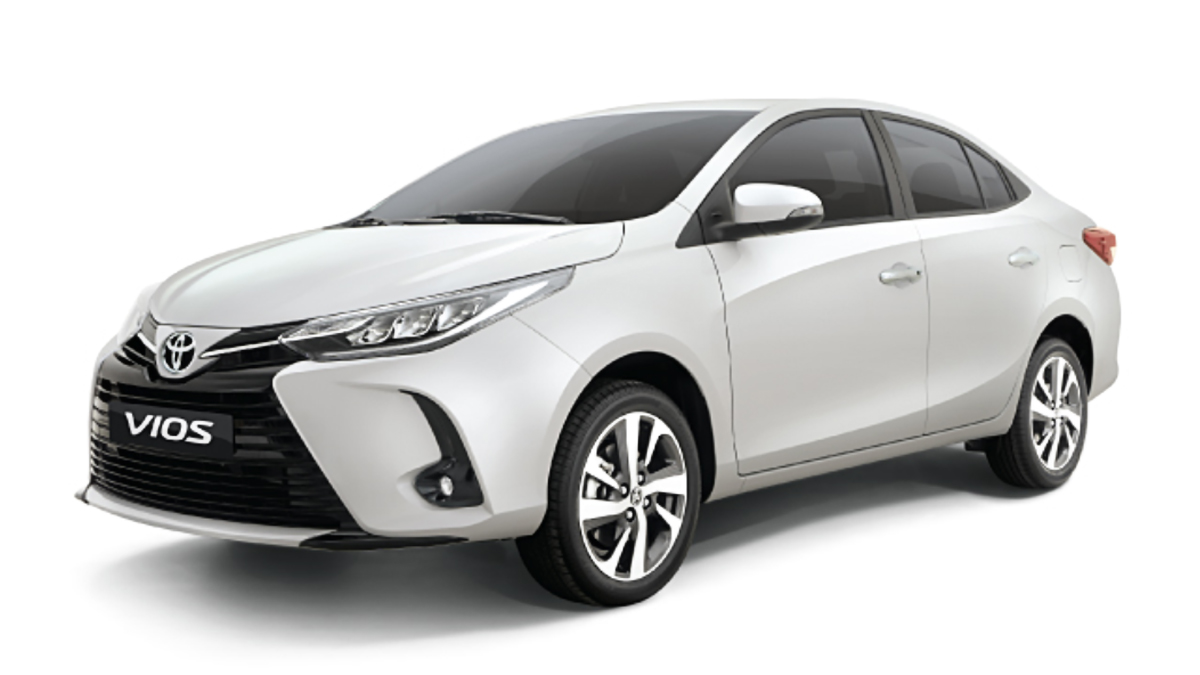Overview
The first Toyota Vios made its debut in Thailand back in late 2002. It was developed as the successor of the Soluna, the Southeast Asian version of the subcompact Tercel sedan which was never offered in the Philippine market. As the Corolla morphed into the larger Altis, this opened up some room for a sub-Corolla model in the local market. Toyota Motor Philippines launched the first gen Vios in 2003; this replaced the aging 1.3-liter variants of the Corolla. Thanks to its popularity, by 2007 the Japanese brand’s smallest sedan was being manufactured locally. In 2018, some fifteen years after the first model landed on our shores, Toyota introduced the latest iteration of its Vios.
While the platform is largely carried over, the new Toyota Vios receives a completely redesigned body with a design language shared with its five-door sibling, the Yaris. Up front it gets a split grille flanked by longer swept-back headlights. It receives vertical foglight housings and a larger lower grille. Moving on to the sides, it features more dramatic body creases in place of its predecessor’s single character line. At the back it gets slim vertical taillights reminiscent of those found in other new Toyota models. While not too obvious, its C-pillars now flow smoothly into the rear trunk.
While the Vios’ exterior has gotten flashier, it has gotten more mature inside. Gone is the dashboard’s faux stitching, its general appearance now has the same feel as that of the larger Corolla Altis. Its center stack is now more integrated; it houses the stereo, central aircon vents and climate control. The top and mid-level variants come with a seven-inch touch screen infotainment system. With an identical 2,550 mm wheelbase, interior space remains the same but its new redesigned seats offer better support and improved comfort.
Improved safety seems to be the theme with the new Toyota Vios which recently earned a five star ASEAN NCAP safety rating. All variants now come with seven airbags; this includes a driver’s knee airbag. The XE, J, and base variants can now be had with a lower priced versions with 3-airbags. Other standard safety features include the following; Anti-lock Braking System with Electronic Brake Distribution, Electronic Stability Control, Hill-Start Assist Control, and Rear ISOFIX child seat anchors.
The New Vios retains the tried and tested suspension setup which is comprised of independent MacPherson struts with coil springs up front and a semi-independent torsion beam with coil springs at the rear. The higher variants equipped with the 1.5-liter motor have disc brakes on all corners. Like most new cars nowadays, the Vios comes with standard electric power steering. For 2020, Toyota gave its Vios a mild refresh, some of the obvious updates includes new headlights, new upper grille and a new trapezoidal lower grille. These styling changes bring it in line with the design of the new Altis.
Like before, the Toyota Vios is available with two DOHC Dual-VVTi gasoline engines options, a 1.3-liter 1NR-FE mill which produces 98hp at 6,000 rpm and 123Nm of torque at 4,400 rpm, and a larger more powerful 1.5-liter 2NR-FE unit which produces 106hp at 6,000 rpm and 140Nm of torque at 4,200 rpm. Both powerplants can be ordered with either a 5-speed manual transmission or a new continuously variable transmission with sequential shift mode.
White Pearl paint costs an additional P15,000
